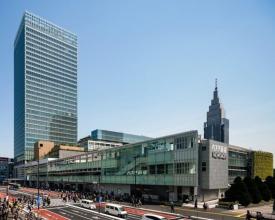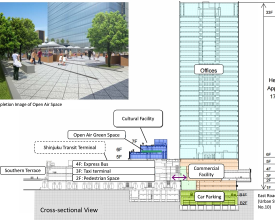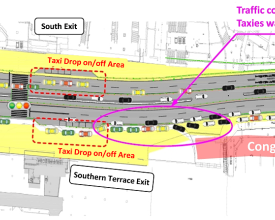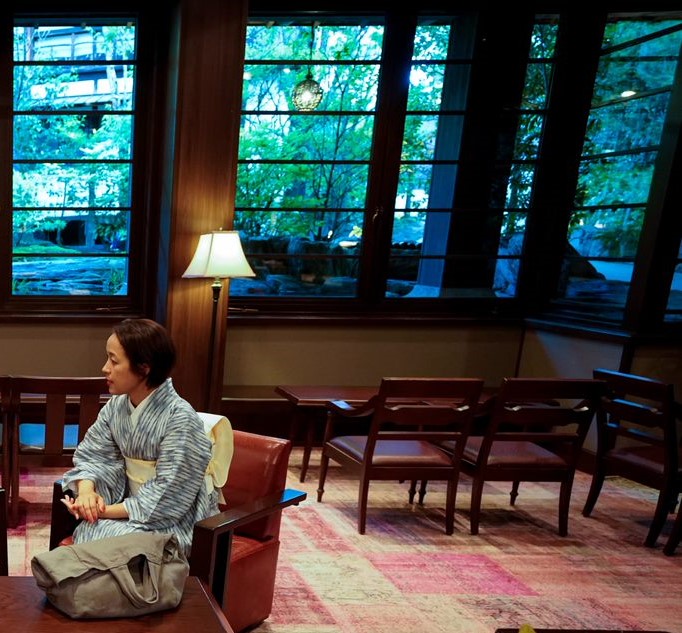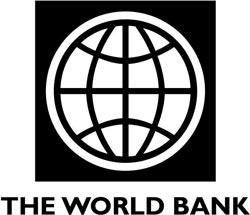
Developing an Integrated Multi-modal Transportation Complex through Public-Private Collaborations
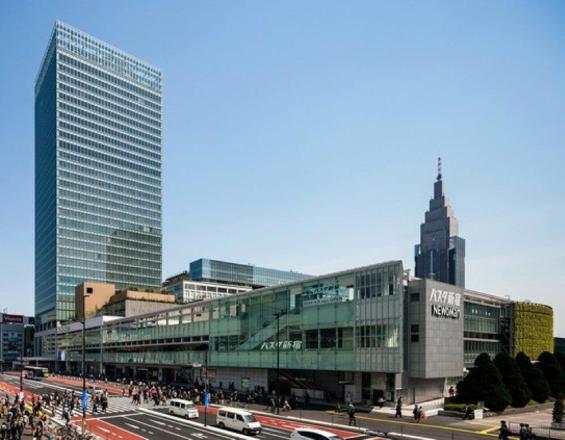
Shinjuku is Japan’s largest business, culture, and entertainment center. A wide range of commercial activities and social services are essentially underpinned by Shinjuku Station -- the nation’s busiest transit hub with around 3.5 million daily passengers. In addition to urban and regional train services, many intercity bus lines in Shinjuku connect more than 300 cities and towns in 39 prefectures nationwide. Recently, the national government initiated the development of an integrated multimodal transportation complex combined together with the improvement of a pedestrian circulation system in collaboration with the private sector. The entire project consists of three major capital improvements of the south exit of the Shinjuku Station area: building Shinjuku Expressway Bus Terminal (Busta Shinjuku), widening sidewalks, and constructing an underground passage.
Context
Challenges addressed
Nineteen independent bus stops were inconveniently scattered around the railway station and were not well aligned for transfers to and from other travel modes. Additionally, there was no public plaza in front of the south exit of the station so a large volume of passengers had to make a stressful, unsafe walk through narrow sidewalks and crossings over an old road bridge. Unquestionably, there was an imminent need for major capital improvement due to increased traffic volumes, outdated road facilities, and worsening pedestrian amenities around the station.
Location
Process
Summary of the process
Bus transit is a vital mode to establish an economically efficient and socially affordable multi-transportation system in both developed and developing countries. However, there can be several negative images with bus transit, such as inconvenient intermodal transfer, uncomfortable waiting space, street congestion, and unreliable operation, and these often prevent travellers from enjoying bus services. The building blocks present the application of modern terminal development led by public to improve the quality of bus services and reproduce safe and pleasant built environments in busy commercial districts.
Building Blocks
Public Initiative for Development of Public Transit Nodes
Busta Shinjuku was developed by the national government as part of a new road bridge on an artificial ground area of about 1.47 ha. The new facility joins multiple transit functions (e.g. a gateway to the railway station, an expressway bus terminal, and a taxi pool) and handles a wide range of intercity bus lines seamlessly. Importantly, this terminal was jointly developed with the East Japan Railway Company, one of the country’s largest privatized railway companies. The company also built a 170-meter-tall building adjacent to the terminal. This tower accommodates many offices and commercial tenants, open air green spaces, cultural facilities, a nursery, a medical clinic, and a farm garden. Also, the government collaborated with multiple private service providers to make available various convenient amenities for travelers in and around the terminal.
An underground passage was newly constructed to connect the Shinjuku Station area near Busta Shinjuku extensively with another subway station operated by Tokyo Metro. With this 150-meter pathway, passengers can smoothly get access to and from the multimodal transit complex on foot without being stuck in pedestrian congestion or passing across car traffic.
Enabling factors
- Leadership by the public sector to coordinate multiple transportation operators through capital improvement projects
- Coordination mechanisms (e.g. periodic stakeholder meetings) to discuss project scheme
- Highlighting benefits of coordination (ideally in monetary terms) for the private bus service providers by the public sector
- Capability of private companies to implement large urban redevelopment.
Lesson learned
When bus stops and lines provided by several private operators are fragmented, the public sector needs to initiate the efficient coordination of multiple bus services through capital improvement projects and/or demand management programs. In particular, public investment in integrated modern terminal development can play a pivotal role in not only aligning public transit operations but also alleviating traffic congestion and related negative externalities around busy commercial districts.
Creation of District-wide Pedestrian Environments
The development of a modern integrated terminal usually includes superior indoor amenities for transit passengers. The terminal’s indoor pedestrian circulation system should be associated with the seamless improvement of outdoor environments. In the case of Busta Shinjuku, the project embraces creation of district-wide pedestrian environments encompassing the transit complex. it widened sidewalks along the national roadway and constructed an underground passage connected to the terminal and railway stations as well as office and commercial buildings by collaborating with privatized railway companies.
Enabling factors
- Coordination with district-level plans
- Collaboration with private developers and railway companies for public capital improvement
- Consultations with bus service providers and local residents
Lesson learned
The creation of a district-wide pedestrian circulation system promotes the use of bus transit services more effectively and the commercial impacts of public investment more extensively around a bus terminal.
Quality Services and Hospitality
A multimodal transportation terminal should accommodate facilities and services catering to a range of travel needs. Indoor space of Busta Shinjuku contains 146 seats, multiuse toilets, nursery rooms, coin lockers, ATMs, and ticket service counters for waiting and transferring passengers. Electric displays also provide real-time information on bus schedules, service destinations, and operation statuses. In addition to these basic equipment and services, it also makes available various convenient amenities for travelers, such as baggage/parcel delivery, cloak, foreign money exchange, travel ticket sales, and free internet access. Furthermore, the terminal’s tourist information center covers multi-lingual travel information on Tokyo and other cities across the country in English, Chinese, and Korean.
Enabling factors
- Application of Information Transportation System (ITS) to ensure up-to-date information provided at the multimodal transit terminal
- Due attention to non-domestic passengers and people with disabilities.
Lesson learned
Providing real-time information at a multimodal transit terminal allows passengers to organize their travel schedule, minimize wasteful waiting time, and arrange extra working/shopping activities more efficiently and enjoyably around the transfer point. Also, introducing a universal signage system is essential to manage dynamic and complex flows of transit passengers and general pedestrians around across public transit facilities and private commercial properties. The provision of multilingual information desks is of particular importance for hospitality, as intercity express buses are an affordable modal option for overseas visitors who are not familiar with the country to identify and reach attractive tourist destinations nationwide.
Impacts
Economic Impact: The improved transit services and reduced travel costs attract more international and domestic visitors to Shinjuku’s office and retail districts. More frequent and smooth face-to-face meetings are likely to increase Shinjuku’s business opportunities and productivity. The tourist, passenger, and pedestrian flows improved and increased by the project are also likely to boost service consumption and merchandise sales in the new shopping mall and existing retail streets around Busta Shinjuku and Shinjuku Station.
Social Impact: The facilities and paths in and around the new terminal building are designed in a barrier-free style for all members of society, including people using wheelchairs, pushing baby strollers, and carrying large suitcases. The seamless circulation system enables easy access not only to transit facilities but also to a variety of social services and commercial activities around Busta Shinjuku.
Environmental Impact: The integrated transit terminal mitigates the negative influences of street traffic (e.g., noise and air pollution) caused by buses and taxies around Shinjuku Station, which could contribute to reduced GHG emission in the long run. Busta Shinjuku also contains several green components, such as greened building walls, a green plaza, and a publicly opened, roof-top farm garden.
Beneficiaries
- Public transit passengers, tourists, and pedestrians around Shinjuku Station
- Residents and business operators of Shinjuku Ward
- Bus, railway and taxi operators
Sustainable Development Goals
Story
Details of the three major improvements are below.
Integrated Expressway Bus Terminal
Busta Shinjuku was built as part of a new road bridge on an artificial ground area of about 1.47 ha and opened in April 2016. The new facility combines multiple transit functions (e.g. a gateway to the railway station, an expressway bus terminal, and a taxi pool) and handles a wide range of intercity bus lines seamlessly. Its indoor space also contains seating for 146 passengers, multiuse toilets, nursery rooms, coin lockers, ATMs, and ticket service counters for waiting and transferring passengers. Electric displays also provide real-time information on bus schedules, service destinations, and operation statuses. In addition to these basic equipment and services, the new transit terminal in collaboration with several private companies makes available various convenient amenities for travelers, such as baggage/parcel delivery, cloak, foreign money exchange, travel ticket sales, and free internet access. Furthermore, the terminal’s tourist information center covers multi-lingual travel information on Tokyo and other cities across the country in English, Chinese, and Korean. Importantly, Busta Shinjuku was jointly developed with the East Japan Railway Company, one of the largest privatized railway companies in Japan. A 170-meter-tall building, JR Shinjuku Miraina Tower was opened by the company in March 2016 adjacent to Busta Shinjuku. This tower accommodates many offices and commercial tenants, open air green spaces, cultural facilities, a nursery, a medical clinic, and a farm garden.
Spacious Sidewalks
A segment of the road bridge facing the railway station exits, previously regarded as a bottleneck of the entire traffic flow of National Roadway Route 20, was expanded from a width of 30-meters to 50-meters, including widening the sidewalks from 5 meters up to 15 meters. While taxies can wait for or pickup and drop off customers in Busta Shinjuku, on-street parking and queuing up along the sidewalks are totally prohibited.
Extensive Underground Passage
An underground passage was newly constructed to connect the Shinjuku Station area near Busta Shinjuku extensively with another subway station operated by Tokyo Metro. With this 150-meter pathway, passengers can smoothly get access to and from the multimodal transit complex on foot without being stuck in pedestrian congestion or passing across car traffic.
